Japanese-inspired rooms are an embodiment of tranquility, minimalism, and natural beauty. These designs emphasize simplicity, clean lines, and a strong connection with nature. Whether you’re seeking a peaceful bedroom retreat or a serene living room, Japanese-style decor offers timeless elegance. Here are 10 stunning designs for creating a Japanese-inspired room that blends functionality with beauty.
1. Shibui-Inspired Minimalist Room
Shibui is a Japanese aesthetic that values simplicity, understatement, and elegance. A shibui-inspired room is the epitome of minimalism, where less is more. Use neutral colors such as whites, beiges, and soft greys. Furniture should be simple and functional with clean lines, avoiding unnecessary embellishments. A low-profile bed, a few strategically placed plants, and perhaps a piece of traditional Japanese art on the wall will complete this serene look.
Key Features:
- Neutral color palette
- Minimal furniture with sleek lines
- Natural elements like plants or wood
- Subtle, high-quality art pieces
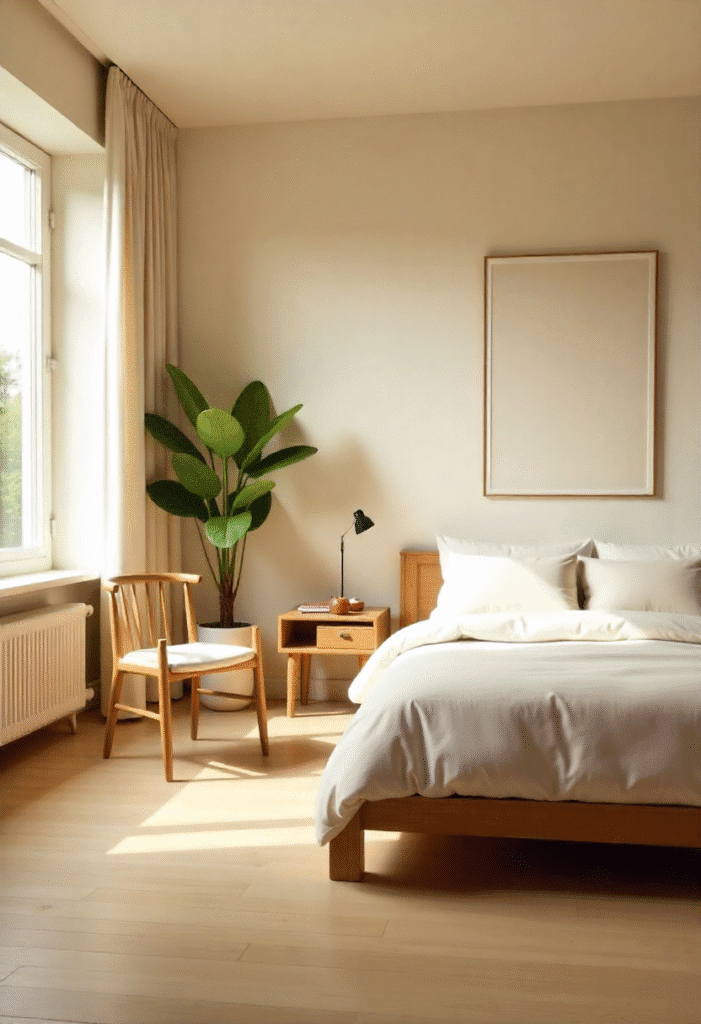

2. Zen Garden-Inspired Bedroom
A Zen garden-inspired bedroom brings peace and balance into your sleeping space. To evoke the tranquility of a Japanese rock garden, incorporate elements such as sand-colored rugs, wooden furniture, and small stones or pebbles in a shallow tray. Opt for tatami mats on the floor to add authenticity, and include simple decor, such as bonsai trees or bamboo.
Key Features:
- Tatami mats for flooring
- Subtle use of stones or pebbles
- Wooden or bamboo furniture
- Natural, calming tones
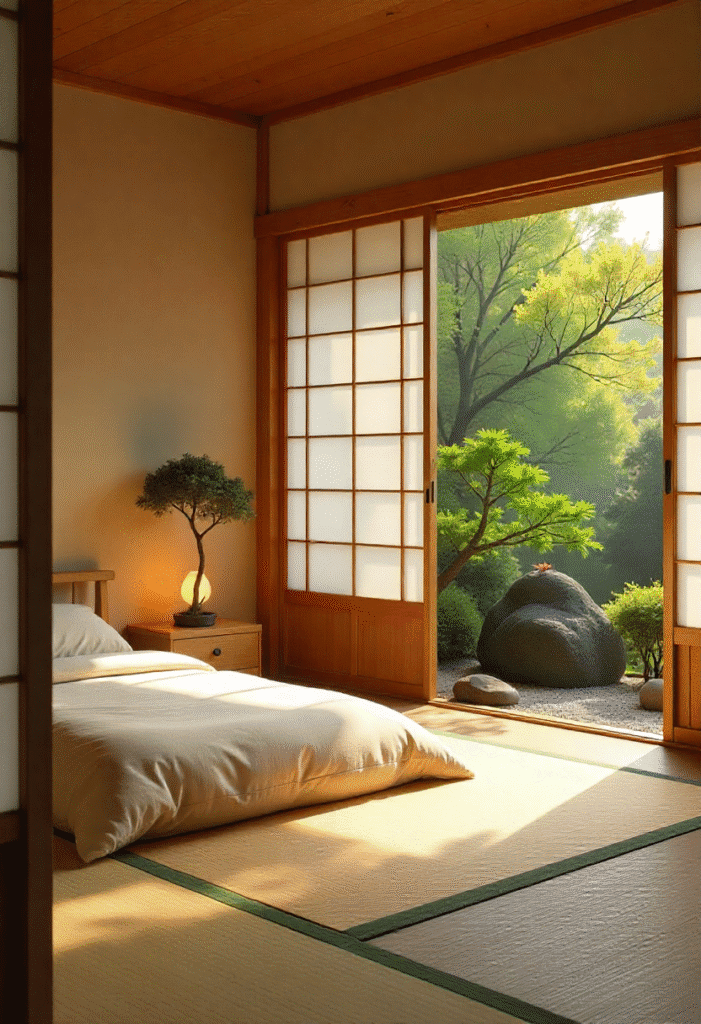

3. Shoji Screen Divider Living Room
Shoji screens are iconic in Japanese interiors, traditionally used as room dividers or window coverings. A living room with Shoji screens adds a soft, diffused light to the space while also creating a functional division of rooms. The screens’ translucent paper diffuses sunlight and creates a serene atmosphere. Combine this with low, minimalist furniture like a futon or a low couch for a fully authentic look.
Key Features:
- Shoji screens for partitioning
- Low furniture like futons or low tables
- Soft, diffused lighting
- Wooden or bamboo finishes

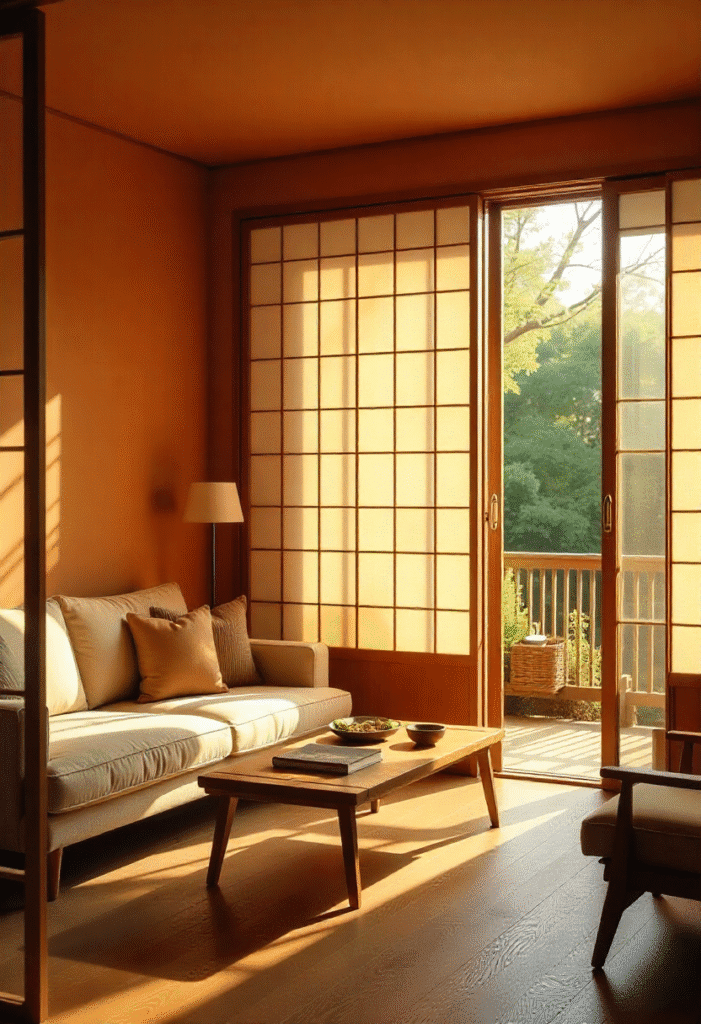
4. Wabi-Sabi-Inspired Dining Room
Wabi-Sabi is the art of finding beauty in imperfection, embracing the natural cycle of growth and decay. A wabi-sabi dining room celebrates simple, rustic furniture with natural imperfections such as a wooden table with visible grain and knots. The focus is on creating an intimate, inviting space that feels grounded and authentic. Decorate with hand-crafted pottery or mismatched tea cups to add warmth and character.
Key Features:
- Rustic wooden furniture with imperfections
- Hand-crafted pottery and ceramics
- Simple, elegant table settings
- A focus on natural textures and materials
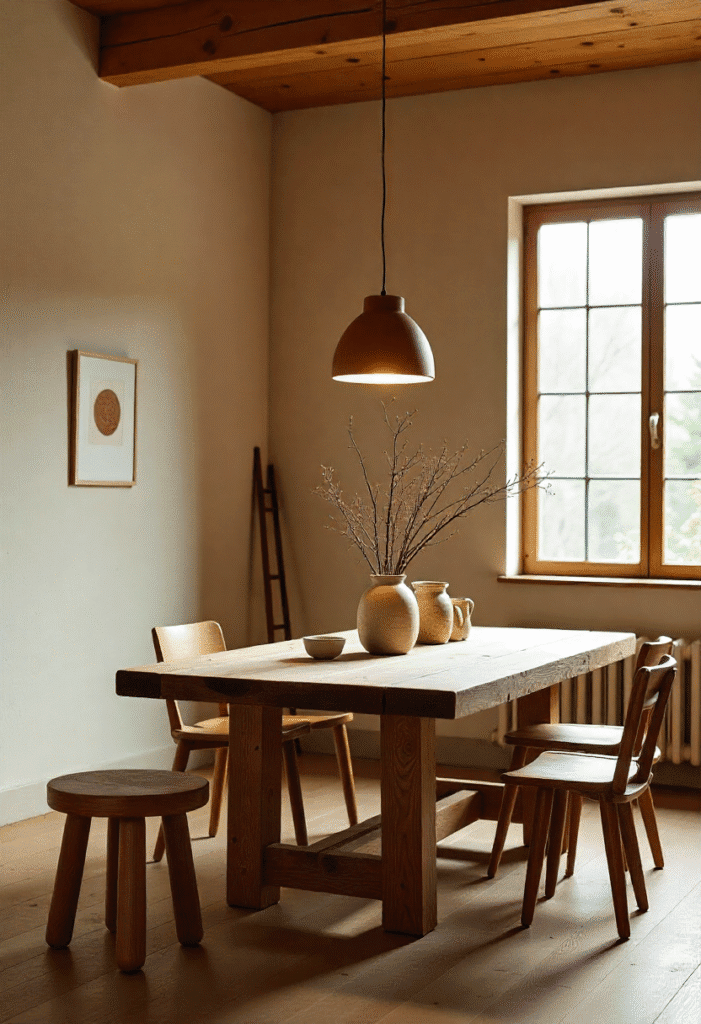
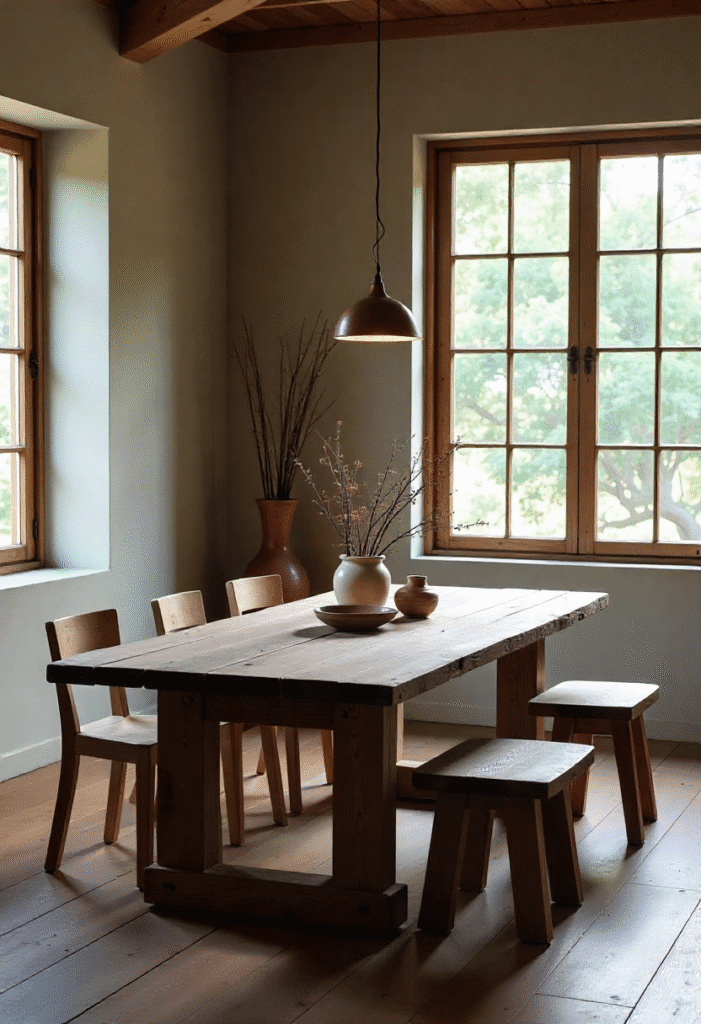
5. Bamboo-Inspired Tranquil Retreat
Bamboo is a staple material in Japanese homes, offering both beauty and functionality. In a bamboo-inspired room, walls could be accented with bamboo paneling, or bamboo furniture could be used for chairs and tables. The natural texture and color of bamboo add warmth and bring an organic touch to the design. Pair this with soft, neutral-colored bedding and cushions for a calming atmosphere.
Key Features:
- Bamboo furniture and paneling
- Neutral-toned textiles
- A focus on organic textures
- Soft, natural lighting
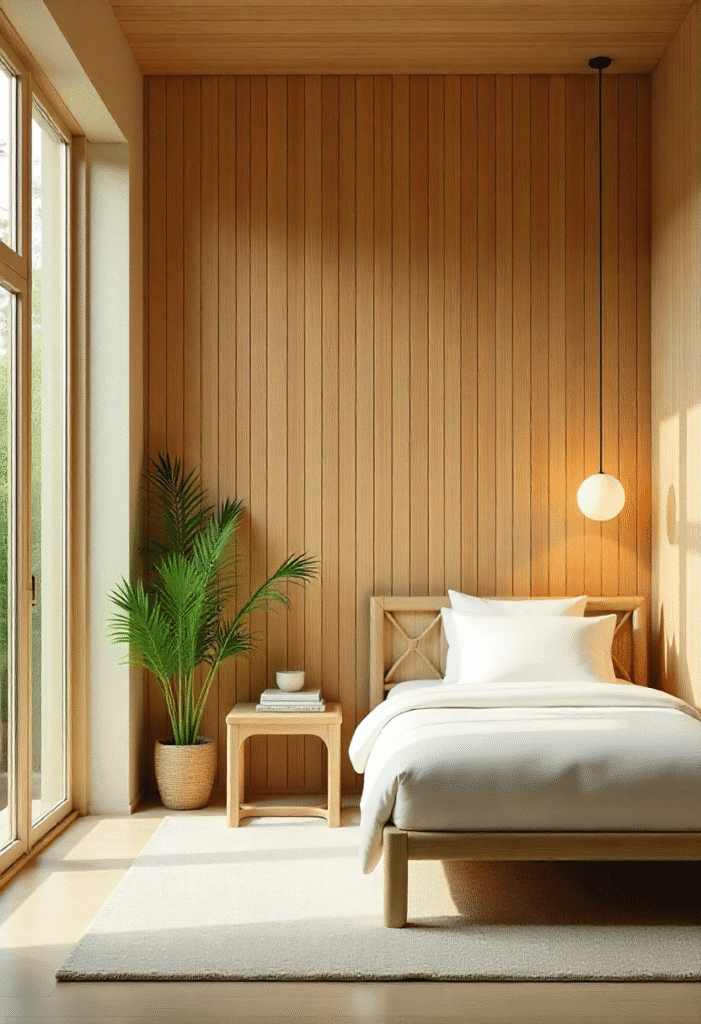
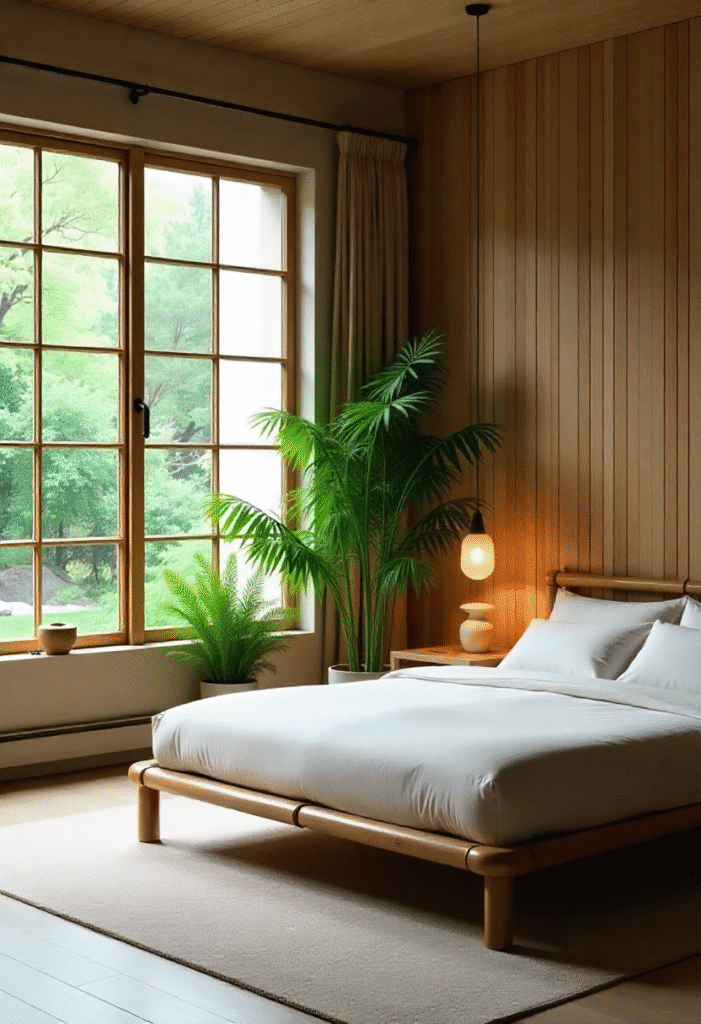
6. Tatami Room with Futon Bedding
A traditional Japanese Tatami room is designed to promote relaxation and restfulness. Tatami mats, made from rice straw, cover the floor, providing a natural texture. Instead of a bed, a futon mattress is laid out each night for sleep. This space is simple and uncluttered, with furniture limited to what is essential. A tatami room fosters mindfulness and helps eliminate distractions, making it perfect for meditation or relaxation.
Key Features:
- Tatami mats for flooring
- Futon bedding, folded and stored during the day
- Simple, low-profile furniture
- Clean, uncluttered spaces
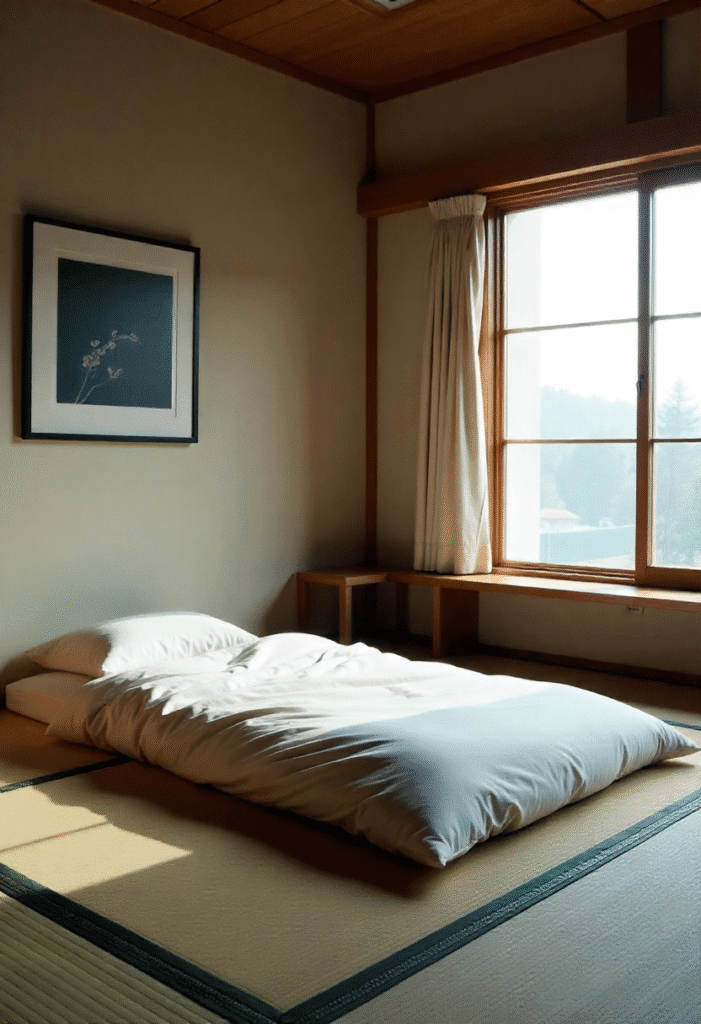
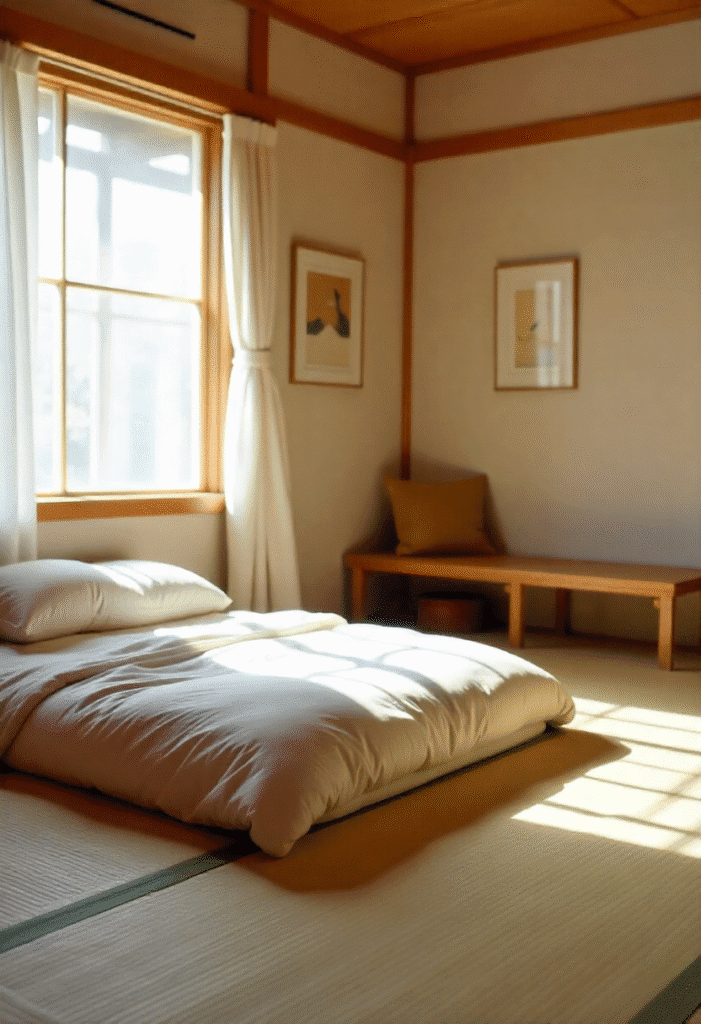
7. Japanese Tea Ceremony Room
A Japanese tea room is designed for contemplation and ritual. These rooms are serene and unadorned, featuring elements such as tatami mats, sliding doors (fusuma), and low tables. The walls might display calligraphy or traditional artwork, and the atmosphere is quiet and refined. Tea ceremonies are an important cultural practice in Japan, and designing a room for this purpose brings a sense of peace to your home.
Key Features:
- Tatami mats and sliding fusuma doors
- Low tea tables and cushions
- Subtle, refined decoration
- A quiet, calming atmosphere
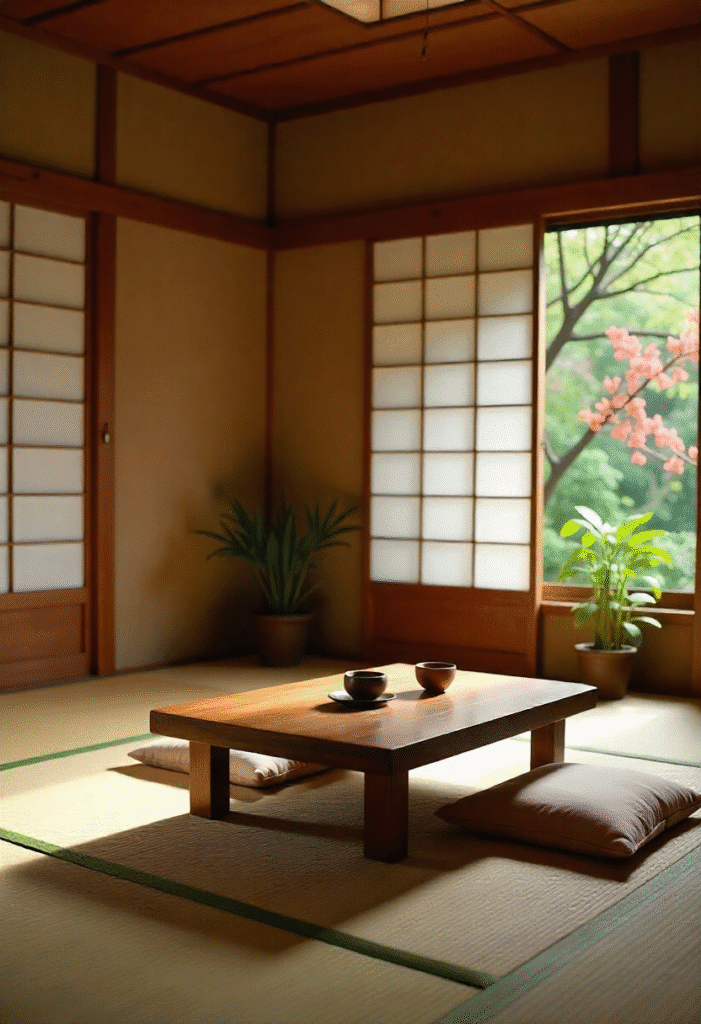
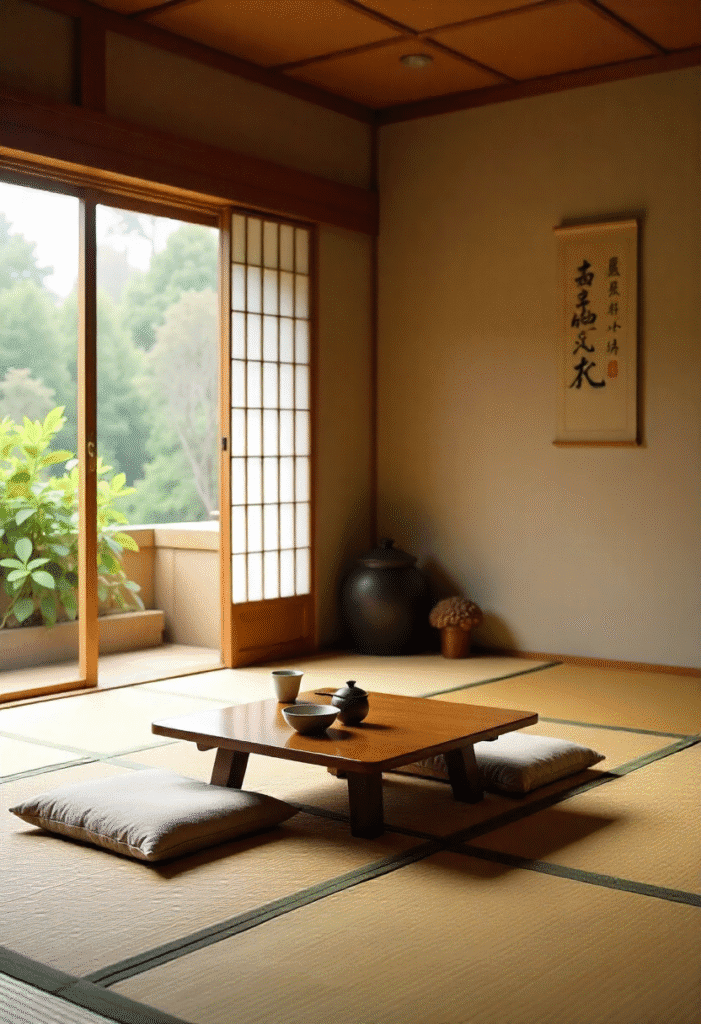
8. Mid-Century Modern Meets Japanese Aesthetics
For a more contemporary take on Japanese interiors, mix mid-century modern furniture with traditional Japanese elements. A low-profile sofa paired with a minimalist wooden coffee table creates a clean, functional space. Add Japanese-inspired accessories like simple ceramic vases, bonsai trees, and paper lanterns to infuse the room with cultural richness while maintaining a sleek, modern feel.
Key Features:
- Mid-century modern furniture with Japanese accessories
- Simple, clean lines
- Bonsai trees or other plants
- Minimalist color palette

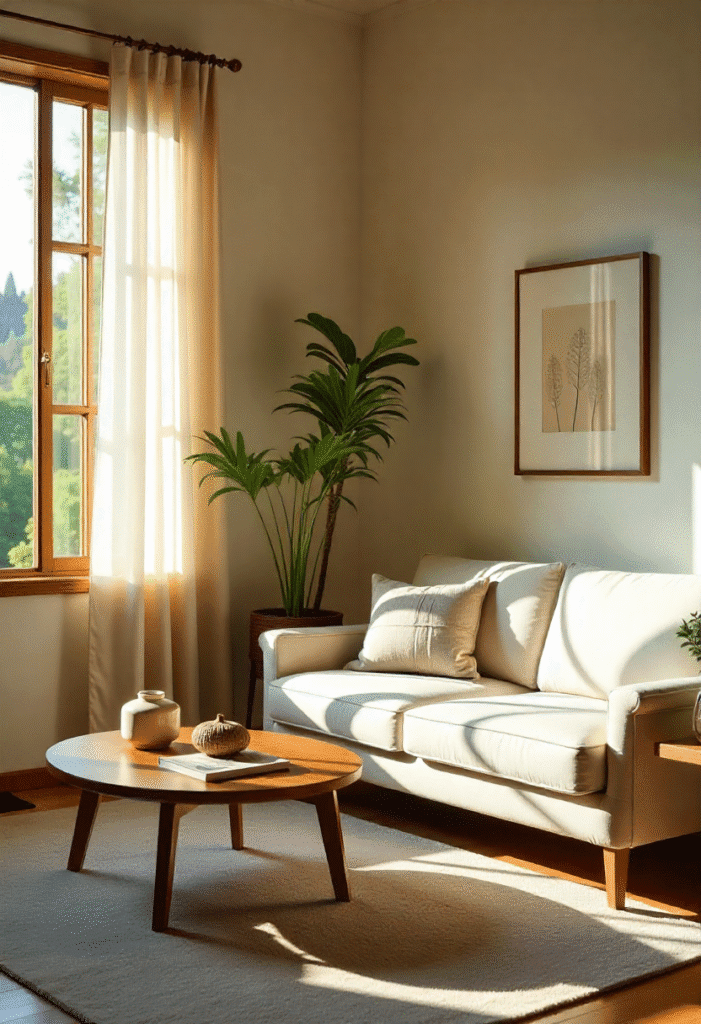
9. Japanese-Inspired Office with Natural Materials
Create a peaceful home office with a Japanese-inspired design that promotes focus and serenity. Use natural materials like wood, bamboo, and stone for the furniture and flooring. A simple wooden desk paired with a comfortable chair and clean lines will make the space feel spacious and calm. Include a few plants or a small indoor water feature to add a touch of nature to your workspace.
Key Features:
- Wooden or bamboo furniture
- Stone or tatami flooring
- Clean, clutter-free desk space
- Natural plants or small indoor water features
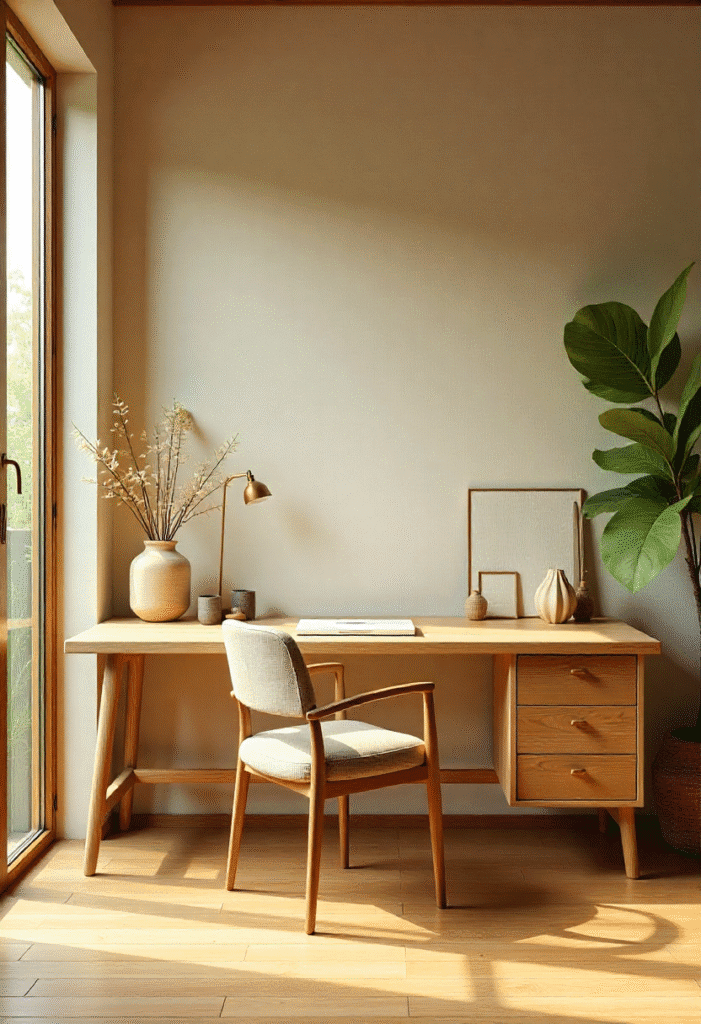
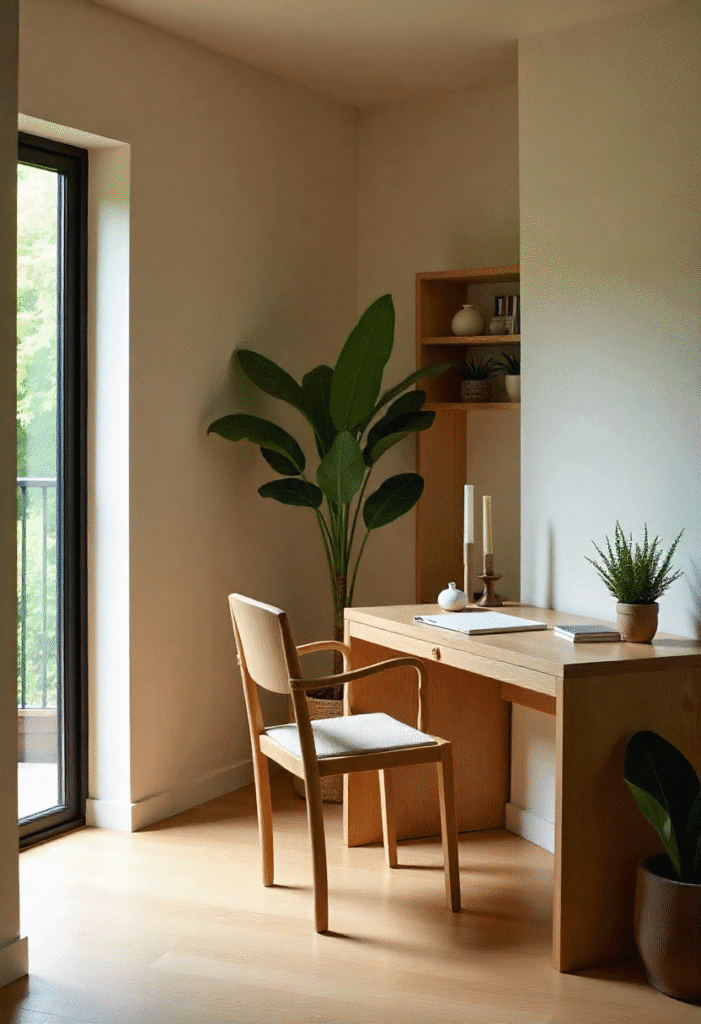
10. Kaiseki-Inspired Dining Room with Minimalist Elegance
Kaiseki, the Japanese tea ceremony-inspired multi-course meal, emphasizes presentation and balance. Create a dining room that echoes this tradition with a minimalist table setting. Opt for natural wooden dining tables and plates with simple yet beautiful patterns. Include low wooden stools or cushions around the table, and keep the lighting soft and warm to maintain an inviting atmosphere.
Key Features:
- Natural wooden dining table and stools
- Simple, beautiful dishware
- Soft, ambient lighting
- Minimalist table setting for elegance

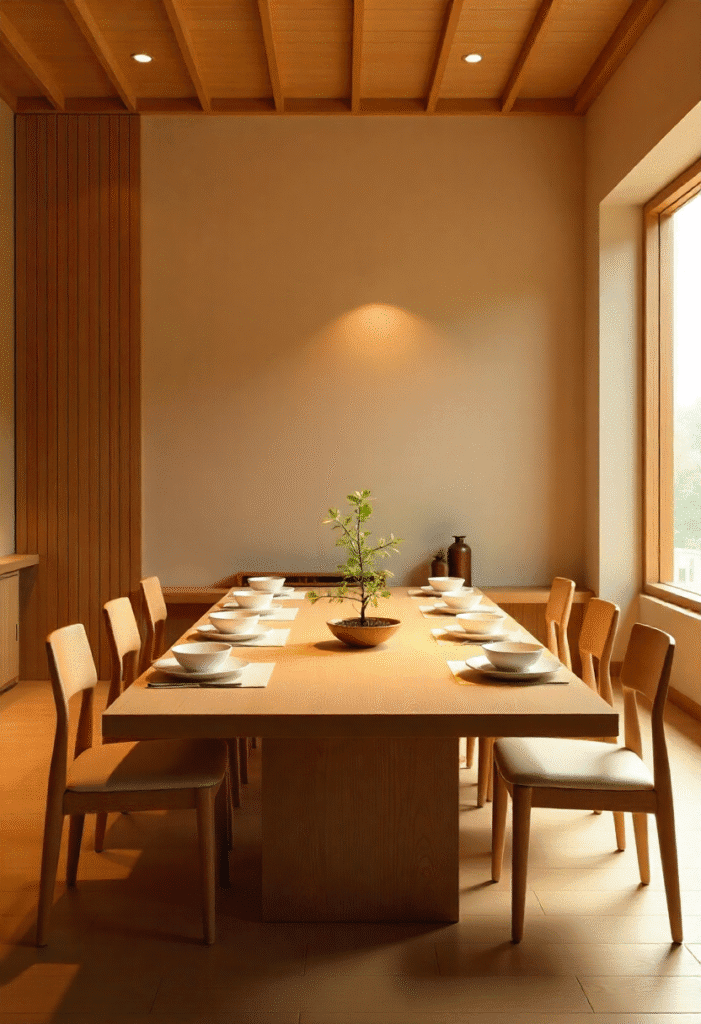
Final Thoughts
Japanese-inspired rooms celebrate nature, simplicity, and beauty in everyday life. Whether you embrace the tranquility of Zen gardens, the elegance of shibui, or the rustic charm of wabi-sabi, these designs create spaces that are not only functional but also deeply serene. The key is to focus on natural materials, clean lines, and a calming atmosphere that encourages relaxation and mindfulness. By incorporating one or more of these Japanese-inspired design ideas, you can create a peaceful sanctuary within your home.
